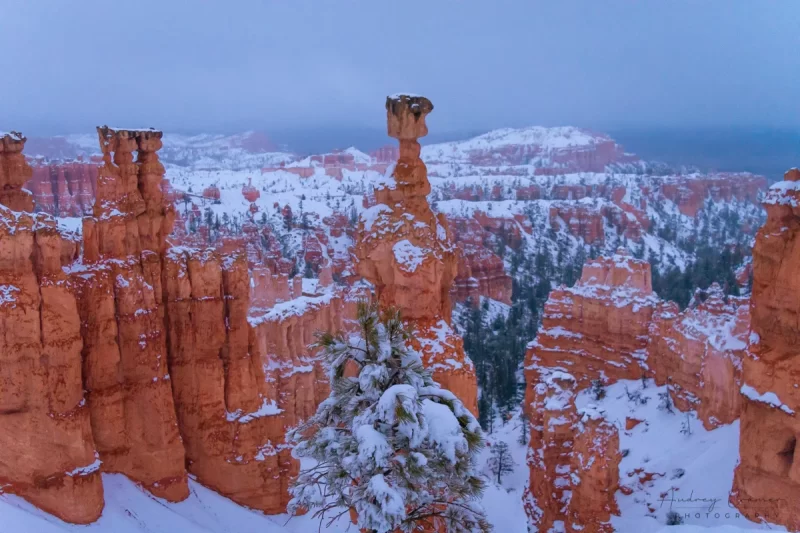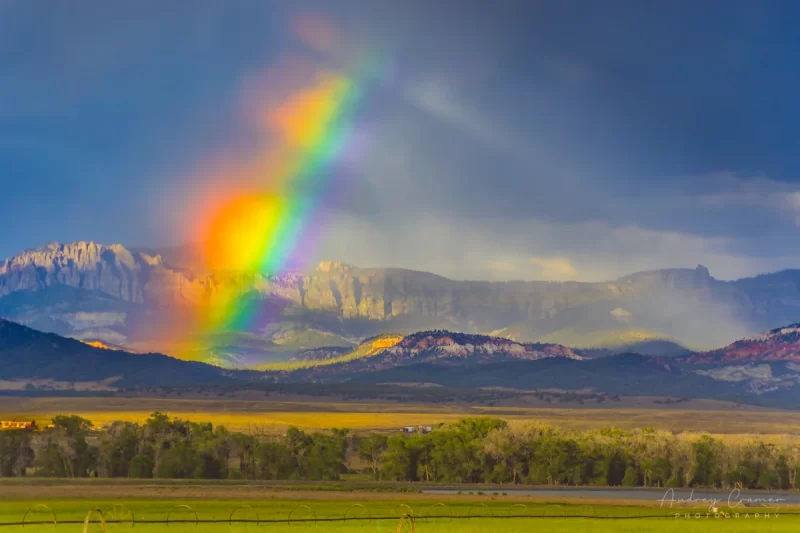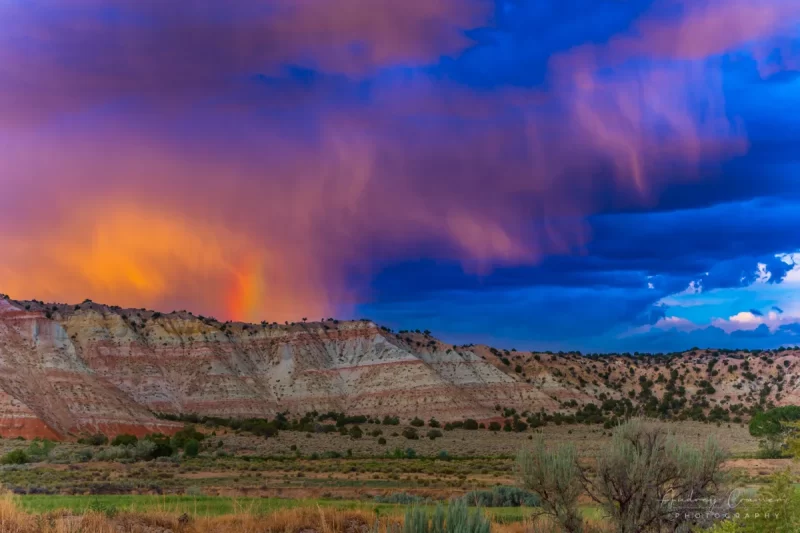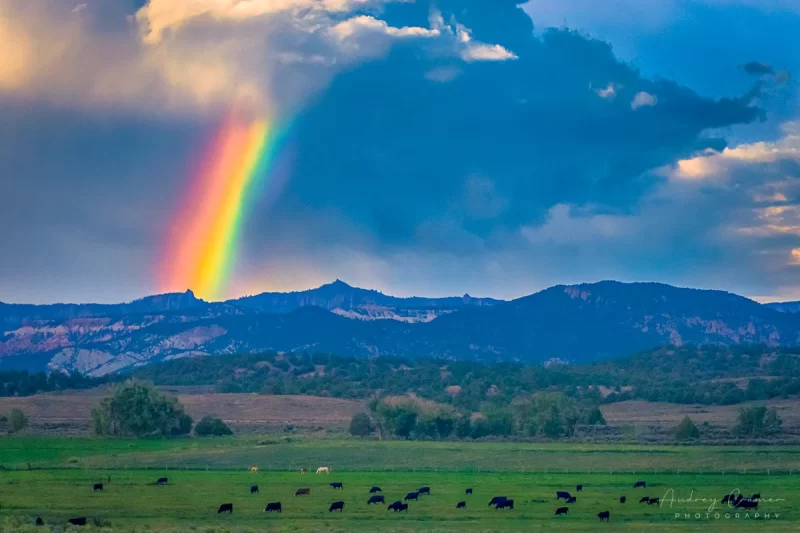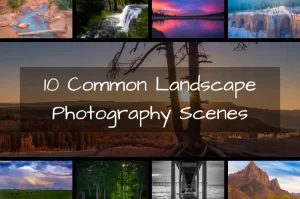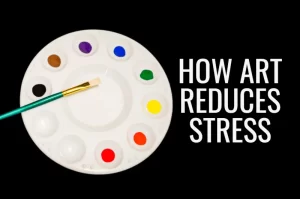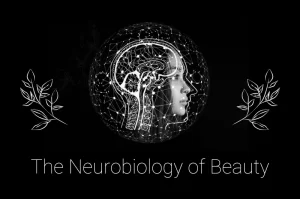Lately, AI has been all the rage. Is it a net good or a net bad for humanity? Who can tell at this point? However, I’ve seen a lot of bad. True, we tend to highlight the bad as a species. Still, that doesn’t erase the problems which AI creates. Let’s dive into just such a problem: AI fake images.


Perhaps you’ve seen the onslaught of AI fake images permeating everywhere. I know I have. Social media is filling up with them. I can’t hardly scroll through my feed these days without running into some fake AI image on an account attempting to pass it off as legitimate photography. What saddens me more are the tons of comments talking about how beautiful the photo depicted is, when the image is not a real photo at all. It’s, at best, a computer-generated imitation which looks similar to, but is not the real thing.
Side note: the account I acquired these AI images from at least acknowledges they share AI images. That’s better than most of these accounts do. Usually, accounts posting fake AI images call themselves a photography page. This page calls themselves a digital creator. I applaud the honesty which this account demonstrates at time of writing.

Now, I freely admit that it can be difficult to identify fake AI images. AI manages to generate some rather convincing humans, at least until you notice too many limbs, toes, and fingers. Perhaps there’s an extra arm coming out from someplace it shouldn’t. I’ve even seen an AI image where the AI generated toes on both hands instead of fingers. Once you look closely enough, you can often spot fake AI images of people.
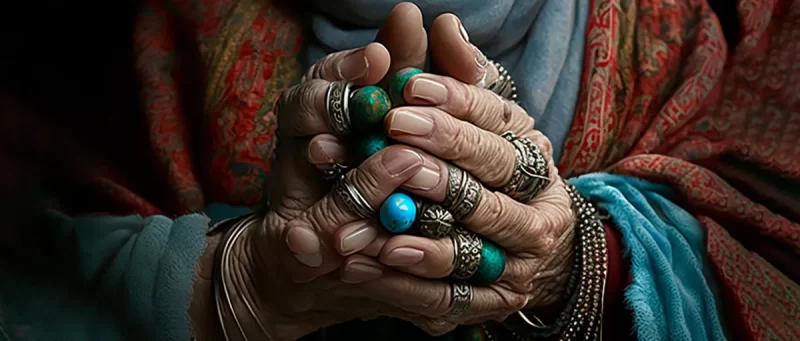
Landscape images are more difficult to detect. It seems AI is doing a better job there than in generating images of humans (at least so far at time of writing). AI-generated landscape images (I refuse to call them photos) are quite convincing. Sadly, I’ve even seen social media connections falling for them lately. With fake AI landscape images, you often need local knowledge to detect the fake. Let’s take a look at some examples.
Fake AI Images as Examples
Wait! aren’t you worried about a copyright claim or a DMCA takedown notice? No, not really. The US Copyright Office ruled you cannot copyright an AI image. It’s not a human creation; thus, it cannot receive copyright protections. However, it can receive other protections such as patents and trademarks. Such will not happen for these low effort prompted images. So, I can display these without fear.
Here we have 4 different AI fake images which I pulled for demonstration purposes. They all appear to show Bryce Canyon National Park at different times and seasons.
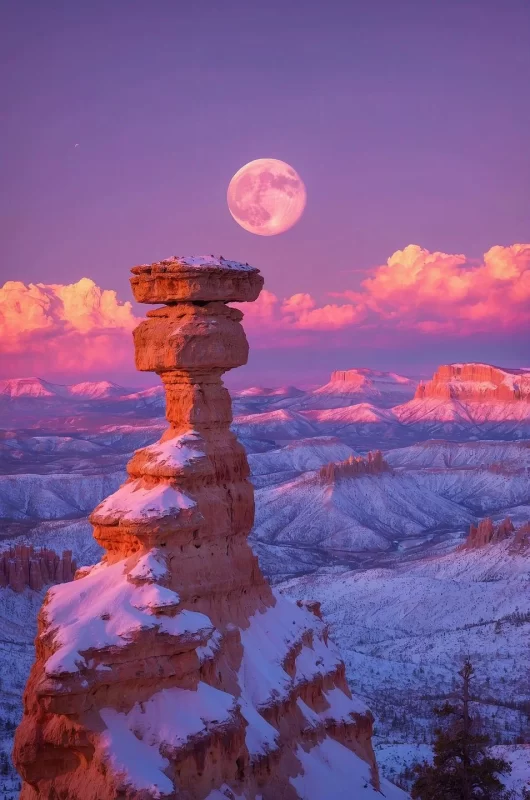
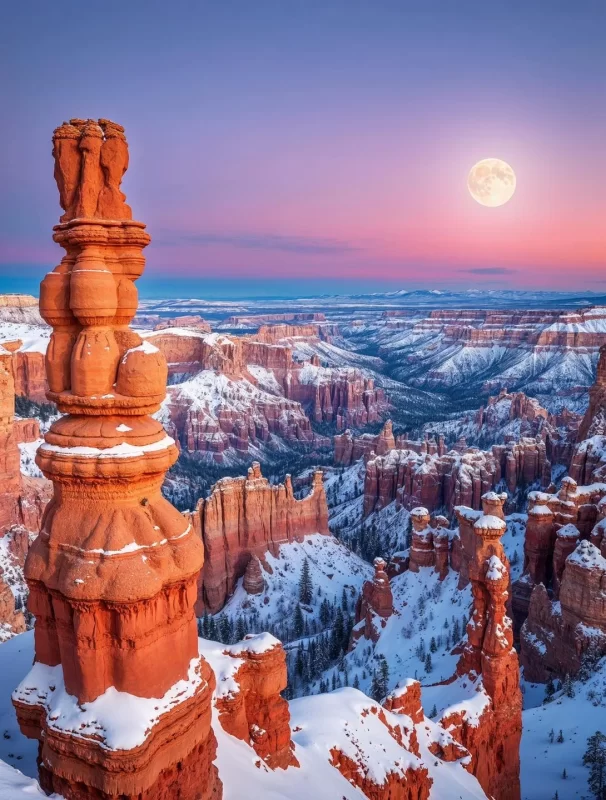


Discussion
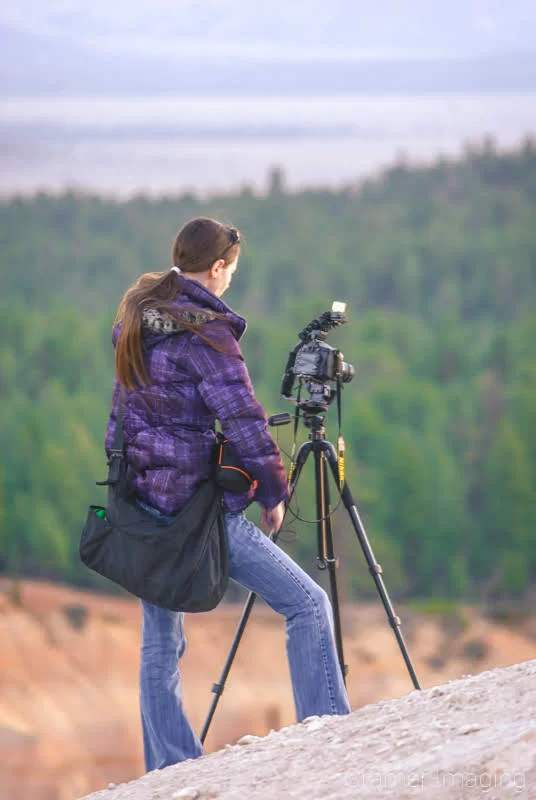
These images above are pretty. There’s no doubt about that. I don’t argue just how pretty and stunning they are. However, what I do argue about is that they aren’t accurate. They do not depict the real place which they claim to show. In fact, they also can show weather conditions which are super rare to impossible to happen together.
I happen to live near Bryce Canyon National Park. I visit several times a year. Also, I’ve gone all over the national park in search of the perfect landscape photo. So, I figure I’ve got a good handle on identifying fake AI landscape images claiming to be from Bryce. Indeed, these examples above are fake AI images supposedly of Bryce Canyon.
Now, the platform I collected them off of stripped all the metadata away. I believe it did so for space reasons. Sadly, this could make it more difficult to identify fake AI images on that platform. However, I can see that they are fake AI just by looking at them and using my familiarity with the national park. Let’s do a side-by-side image comparison to illustrate this point.
Comparing Fake AI Images to Reality
Let’s look at each fake AI image individually, starting with the fake Thor’s Hammer image.
Fake AI Thor’s Hammer Image vs. Reality
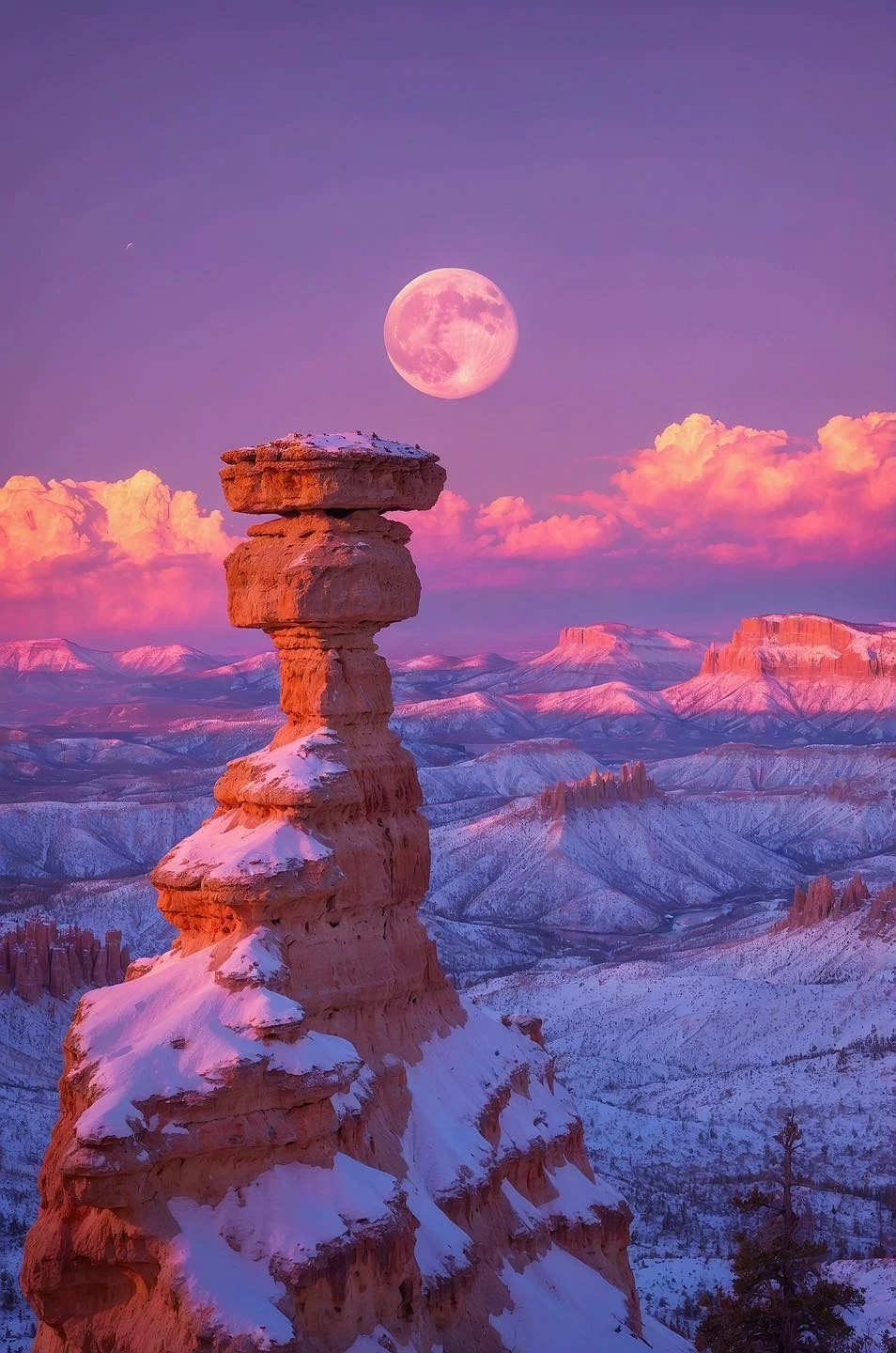
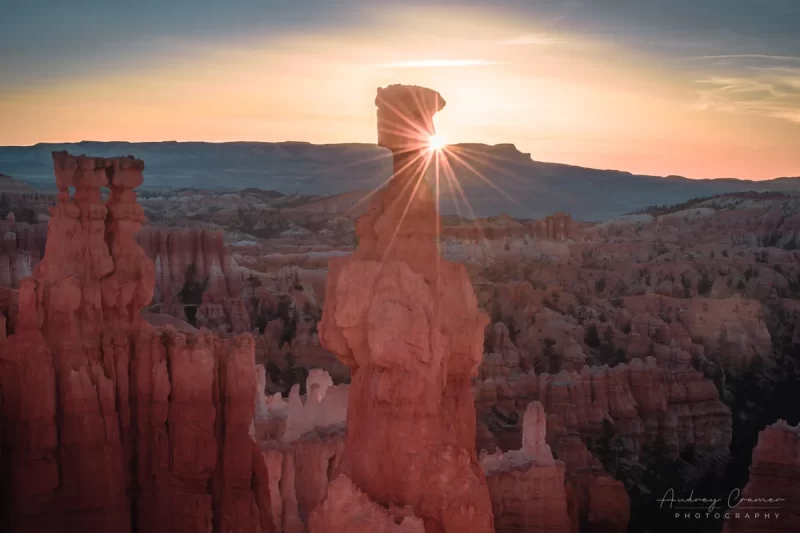
Here we are comparing the fake Thor’s Hammer image to a real photograph I took of the real Thor’s Hammer in Bryce. They appear very different from each other. Yes, I have a winter version of Thor’s Hammer. However, the mist and clouds obscure the background and make straight comparison more difficult. Still, here it is so you can see the real thing covered in snow for yourself.
Perhaps you begin to notice the similarities between my 2 Thor’s Hammer photos and the fake AI version. The AI image is very different. The shape is different. The background landscape is different. Clearly, this fake AI image is not the real Thor’s Hammer. Also, note how the snow piles up in the fake image. That’s not how snow layers on the land. There should be SOME amount of snow atop the hoodoo fins in the background. My actual winter Thor’s Hammer photo demonstrates that nicely.
Fake AI Skinny Hoodoo Image vs. Reality
Next, we’ll look at a skinny hoodoo image. I think it might be trying to be Thor’s Hammer, but I’m not certain. So, we will run with it without that label.
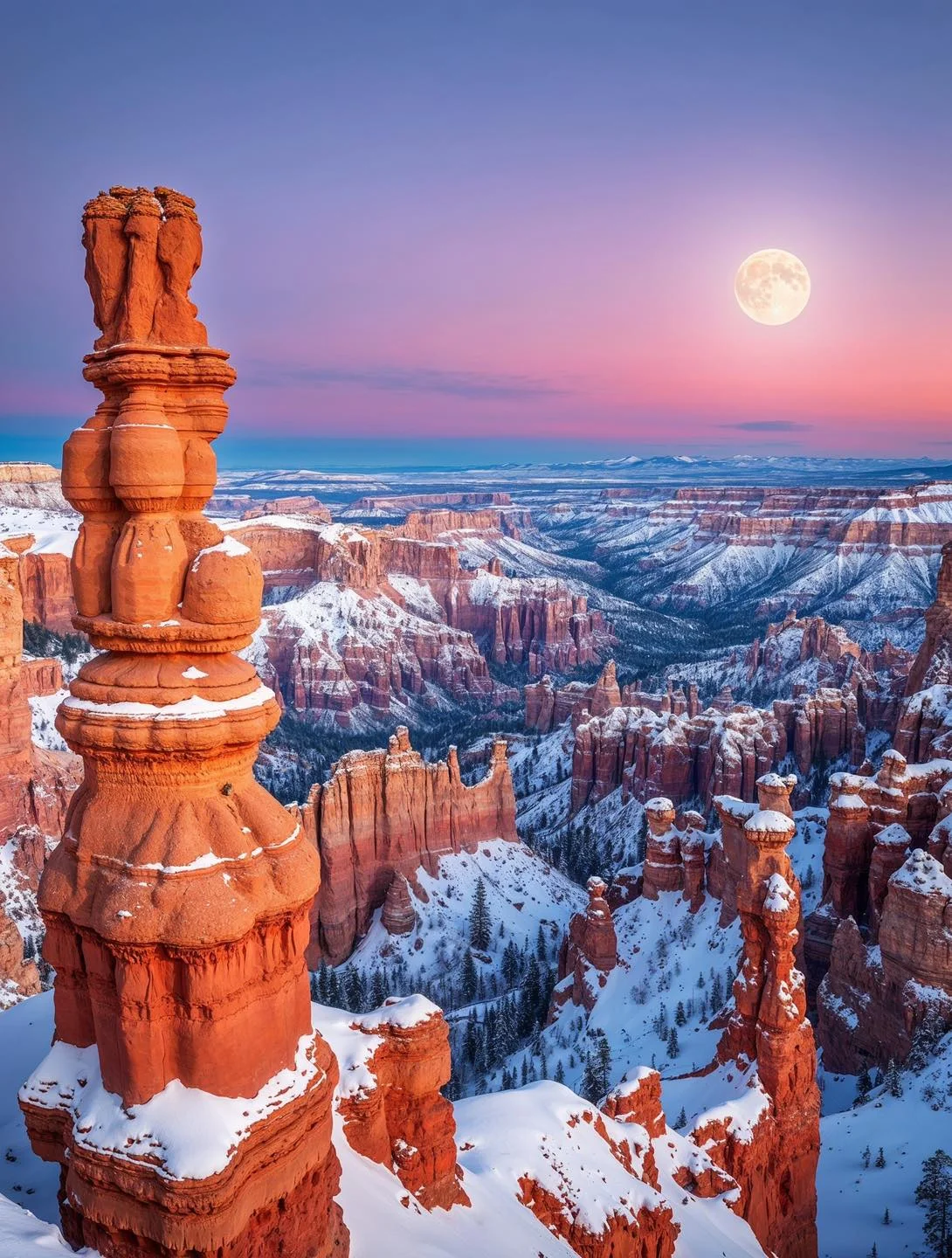
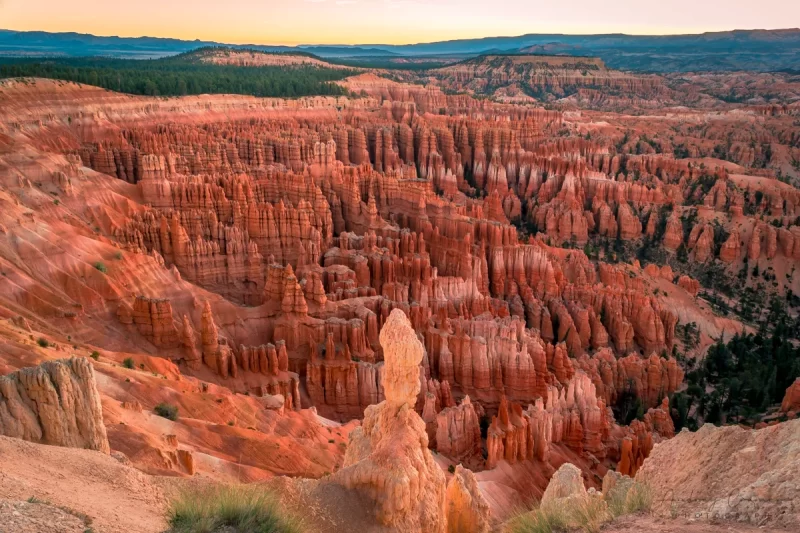
Red sandstone makes up the hoodoos of Bryce Canyon. It is weak and fragile. It’s also susceptible to the weather and erosion. No hoodoo this skinny and this tall would last for very long given the elements, especially this close to the rim.
Thor’s Hammer’s base is much wider than this is. Here is a more distant shot of the entire hoodoo.
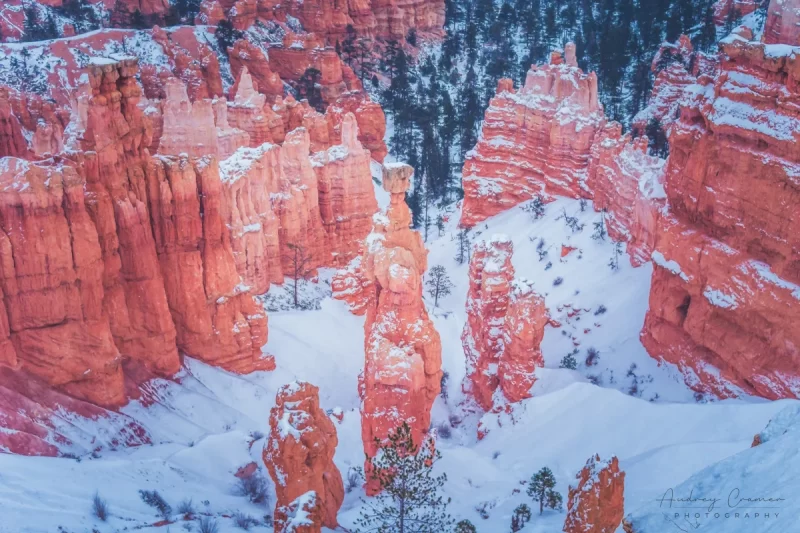
The other hoodoo, depicted in my photo above, is much shorter than Thor’s Hammer. Indeed, it’s also much shorter than the fake AI image hoodoo. That is an example of the kinds of hoodoos which can survive for any longer length of time at or near the rim.
Perhaps you can detect from this photo that the base of Thor’s Hammer is much wider than the fake AI image hoodoo is. Also, Thor’s Hammer is not on the rim. I shot the image depicted above while pointing down from the rim of Bryce Canyon. Thor’s Hammer enjoys shelter from the wind thanks to the nearby cliff I was standing on.
Here’s an example of a much skinnier hoodoo from Bryce. It was also up close to the rim.
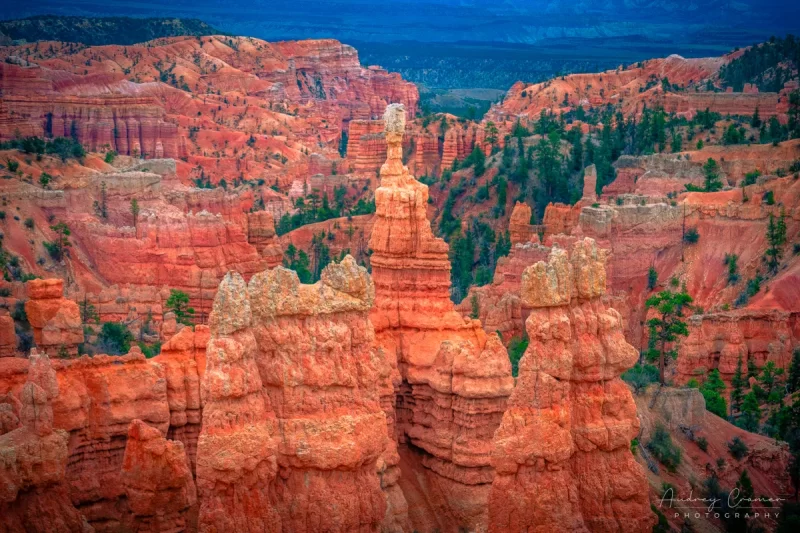
I used the past tense above for a reason. So, what happened to it? It broke off at the skinny point a few years ago. You can no longer see this formation as depicted here. Notice how much thicker that base is than in the fake AI image? Yet it still broke. If that AI hoodoo ever existed in Bryce, it would weather away and topple over quickly.
Fake AI Tunnel Through Rock Image vs. Reality
Next, let’s look at the image which depicts a tunnel through the rock opening onto a scene of pine trees and hoodoos.
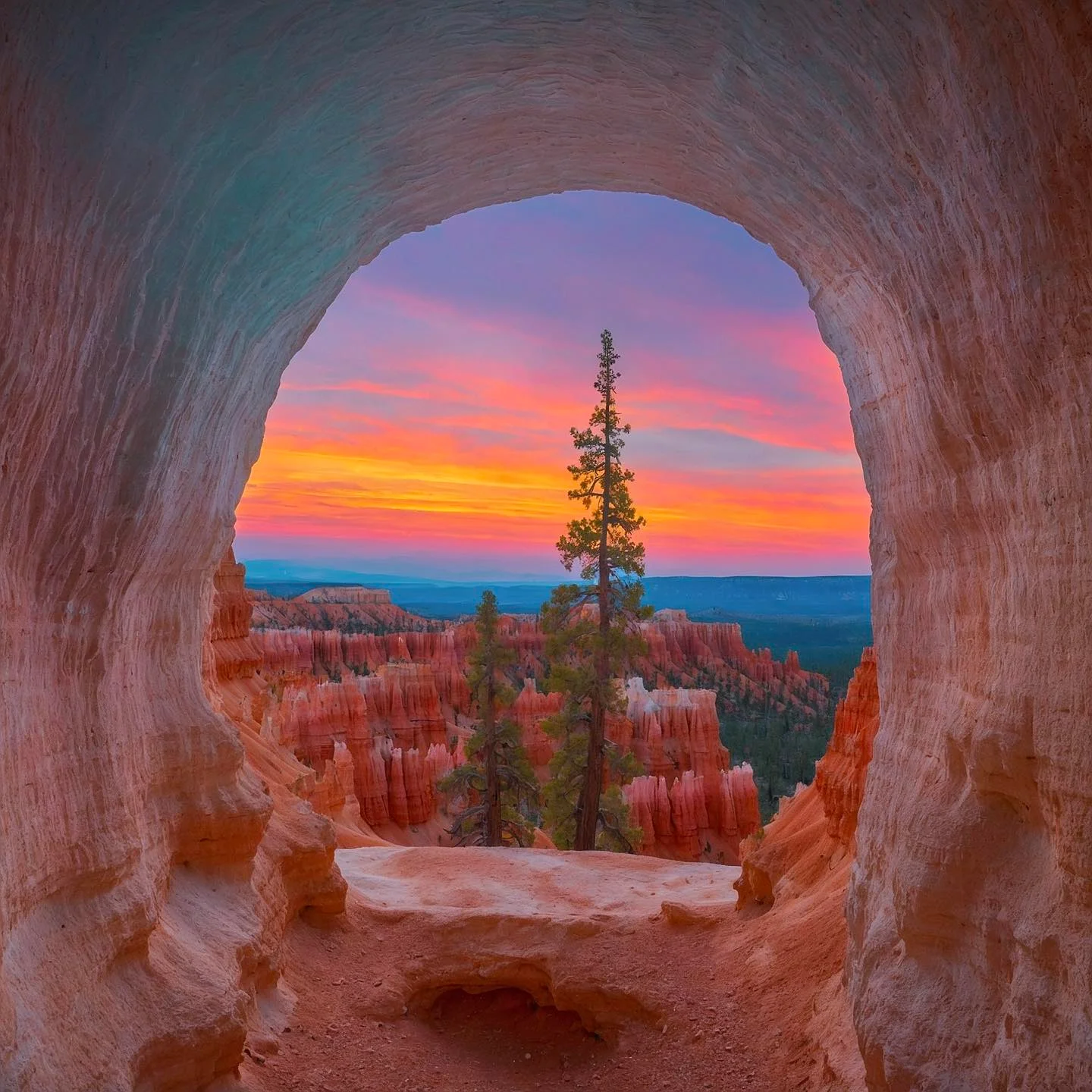
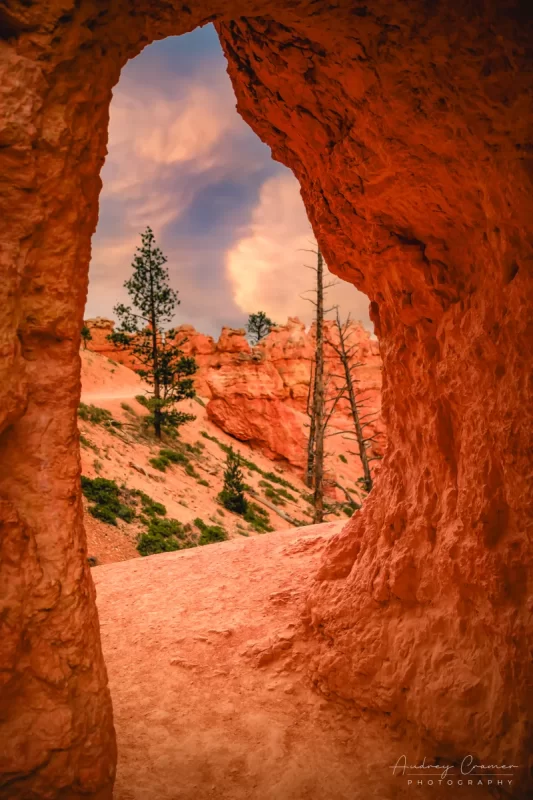
Bryce Canyon does indeed offer some trails with tunnels through the rock. That part is undeniable. However, this particular fake AI image of a tunnel looks all wrong for Bryce Canyon. The real Bryce Canyon trail tunnel is much more doorway shaped and much rougher. The fake AI image tunnel resembles something closer to what you see with the car tunnels at Zion National Park. You simply don’t see trail tunnels looking like this at Bryce. Also, I can’t think of any trail with a tunnel opening up to this high of a viewpoint over the canyon below.
Fake AI Bryce Canyon Rainbow Image vs. Reality
Finally, we’ll tackle the Bryce Canyon rainbow image. There’s issues with it as well.
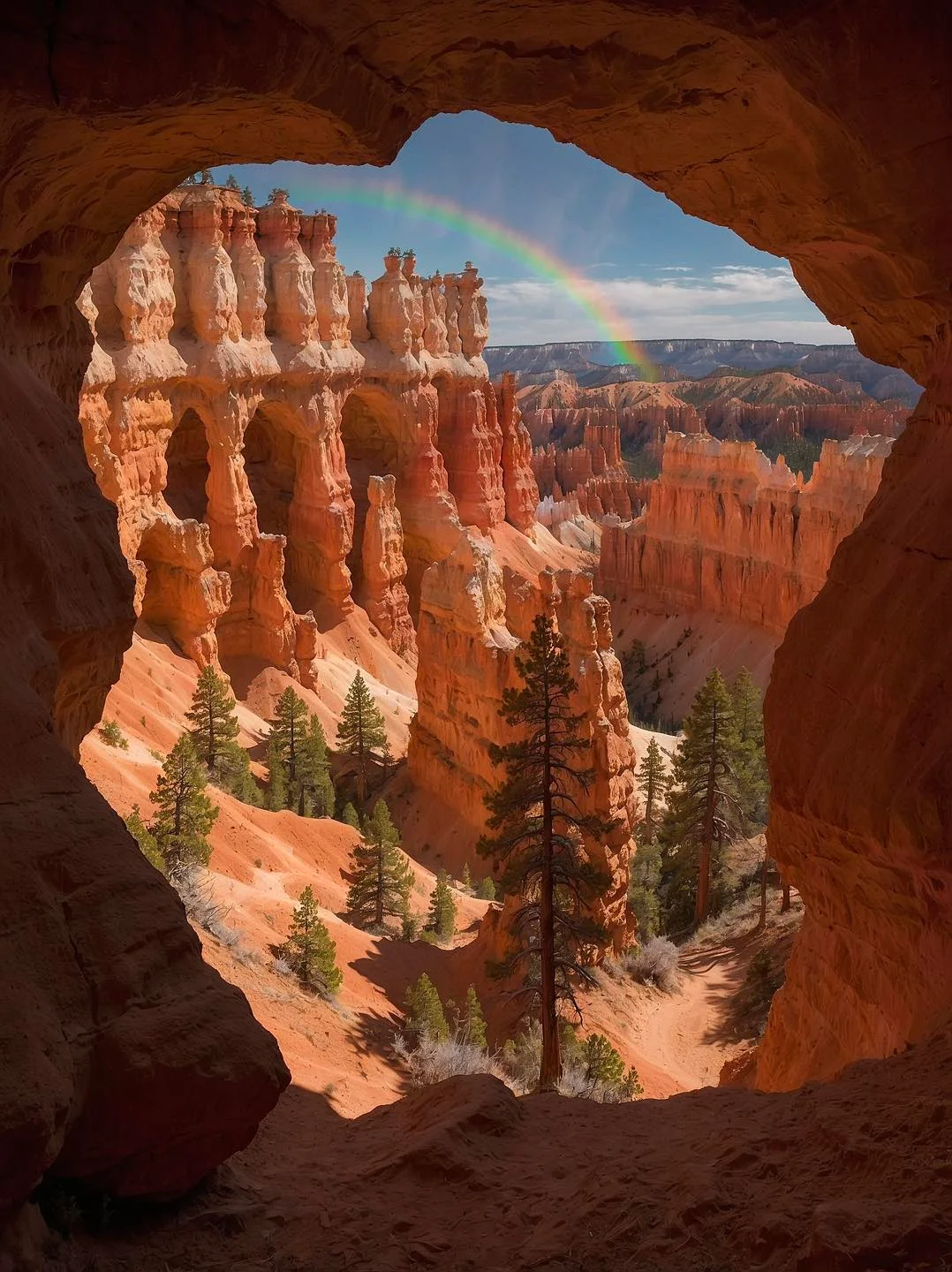
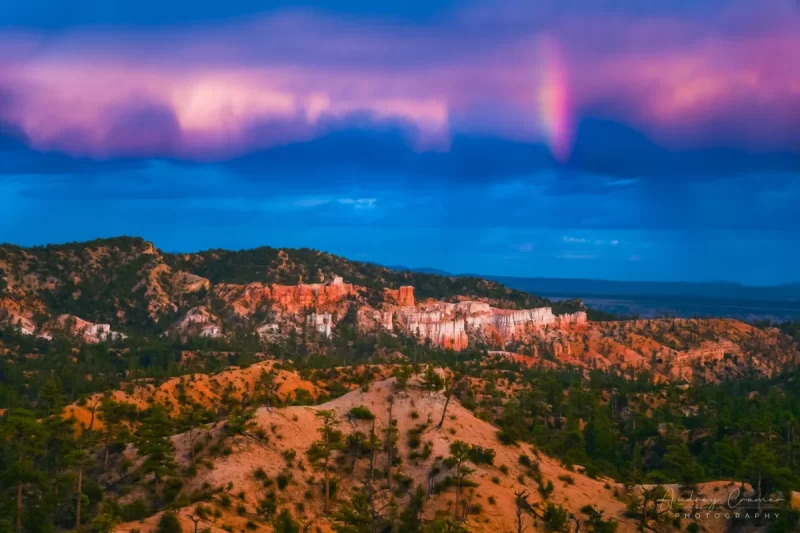
My biggest red flag with this image is that it depicts a rainbow in conditions which a rainbow would rarely, if ever, appear. Also, the window framing this shot is all wrong too. We already discussed what tunnels look like in Bryce. Windows do happen in Bryce Canyon hoodoo fins. However, they are not this big, nor are they this close to the ground for someone to walk in the sand and photograph from.
Rainbows are uncommon weather phenomena. It doesn’t matter where you are. They require a specific set of circumstances to appear. Noontime, which these shadows illustrate, is not when the sunlight will shine through falling rain. You need morning, later afternoon, or evening for that to happen. At those times, the sun is at the right angle for a rainbow to appear.
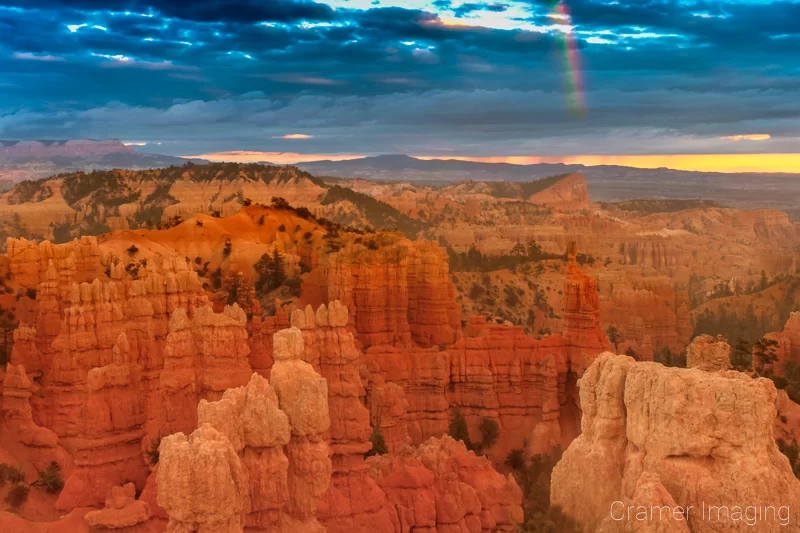
Also, while I’ve seen and photographed a couple rainbows over Bryce, they are still rare. Mostly, if you’re lucky enough to see 1 over Bryce, it’s usually a short arc like those depicted here. Full bows, double bows, and longer arcs are much rarer than the short arcs here.
Ok, How About Something Not from Bryce Canyon?
So, I’ve ripped apart 4 different fake AI images of Bryce Canyon by pointing out just how wrong they are. What I demonstrated with those image comparisons is that it sometimes takes local knowledge to detect fake AI landscape images. That’s all well and good. How about something else? Are there other landscape scenes which don’t require local knowledge to detect? Some fake AI landscape images are so generic that there’s no way you could figure out if they’re real or not. Then again, other fake AI images are obvious even if you haven’t been there before. Take a look at this image below.

Once again, we have a stunning image. It depicts saguaro cacti in the middle of a storm with a rainbow in the sky and lightning striking. This would be a prize of a photo in any photographer’s portfolio if it was real. However, it’s obviously not. I don’t need to take a trip to Saguaro National Park to see that this is a fake AI image. The rainbow itself is super tell-tale that way. I’ve never seen a rainbow look like that in the real world. If you have full spectrum color vision, then you also understand. Instead, the rainbows I’ve seen look like these.
Even sundog rainbows don’t look like this strange rainbow above. For those who don’t know, a sundog is a specific set of atmospheric conditions which render a halo around the sun. When the sunlight passes through the air and the ice or water present, it forms a rainbow arc.
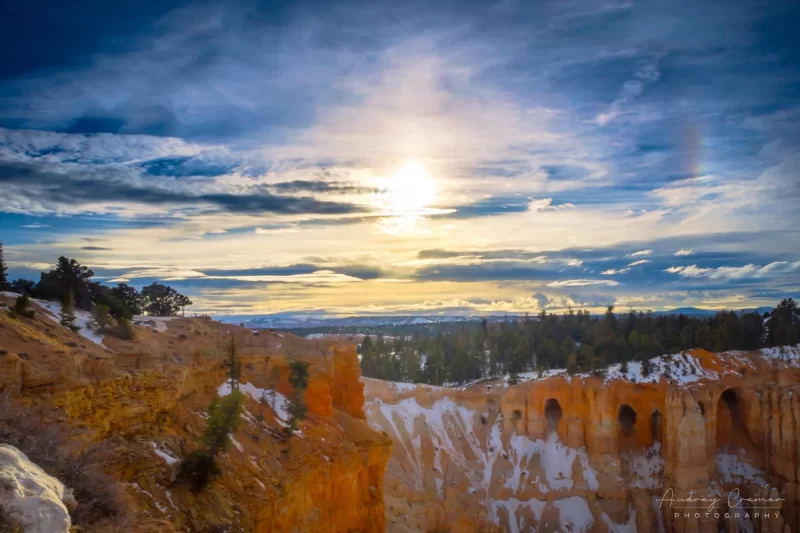
As I’ve said before, I don’t often run into full bow rainbows out here. So, my rainbow portfolio is filled with shorter arcs instead. Yes, these are all real photos of rainbows, even the broken rainbow. It’s that fractured state which really caught my interest. But the point is to show you real rainbow photos to compare with the bad AI generated version above.
Also, it bears noting that capturing a rainbow and a bolt of lightning in the same frame is difficult to do. It requires a lightning trigger for your camera or an extended shutter speed to capture the lightning at all. Now combine the low probability of a lightning strike with the also low probability and specific atmospheric conditions need for a rainbow and you get the idea. Alternatively, you could combine different skies together in post-processing. However, none of those options should render a rainbow looking that terrible. At least the atmospheric conditions of this AI image look better and more accurate than the conditions in the last AI rainbow image.
Other Non-Bryce Canyon Examples
When it comes to fake AI images, you can expect to see all kinds of scenes. However, I’ve seen a bit of a trend. I don’t understand that trend, but it’s there.
Interestingly, I seem to see many of these AI fake images depicting the American Southwest. I’ve seen Bryce Canyon, Zion National Park, Capitol Reef National Park, Escalante National Monument, Glen Canyon National Recreation Area, Grand Canyon National Park, Monument Valley, Antelop Canyon, the New Mexico desert, Petrified Forest National Park, Arches National Park, Canyonlands National Park, Saguaro National Park, and more. I don’t see so many AI fake images of other parts of the world. However, this might have more to do with my particular feed than anything else.

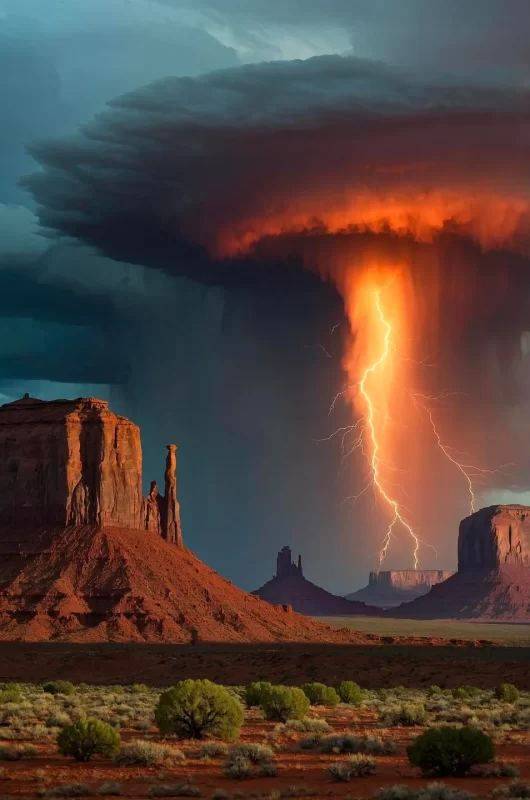

These are a trio of examples of these AI fake images I was referring to. I even give a cliff-notes version of what’s wrong with them so you can easily see that they are AI generated images.
What’s the Harm in Fake AI Generated Images?

Ok, so fake AI generated images exist and they don’t always do a good job of depicting what they are supposed to. What’s the harm? I suppose that there isn’t too much harm which can happen. It’s not likely that anyone will die from an AI image. I could be wrong, but I don’t want to know how.
However, the worst damage AI images can do is different. You are looking at brand damage if you attempt to pass off such fakes as the real thing. Otherwise, you’re looking at some serious misinformation and improper education of the masses.
Imagine if all you’ve ever seen of Bryce Canyon are the AI images included here. Should you ever visit Bryce itself, you might want to see Thor’s Hammer. I can feel your confusion and disappointment at not seeing the AI version depicted here. You might not even recognize the real Thor’s Hammer for what it is.
If you were hoping to see colorful rings of petrified wood at any petrified wood park (national or state). You’ll be disappointed. It’s a brown rock. There’s no red, white, or blue rings at all. The list goes on.
I will give you that some fake AI images are better than others are. But that doesn’t change the fact that those images are still fakes. Check out this example of the North Window from Arches National Park. The moon is obviously wrong and way too big. However, other than that, it’s not a terrible replication attempt.
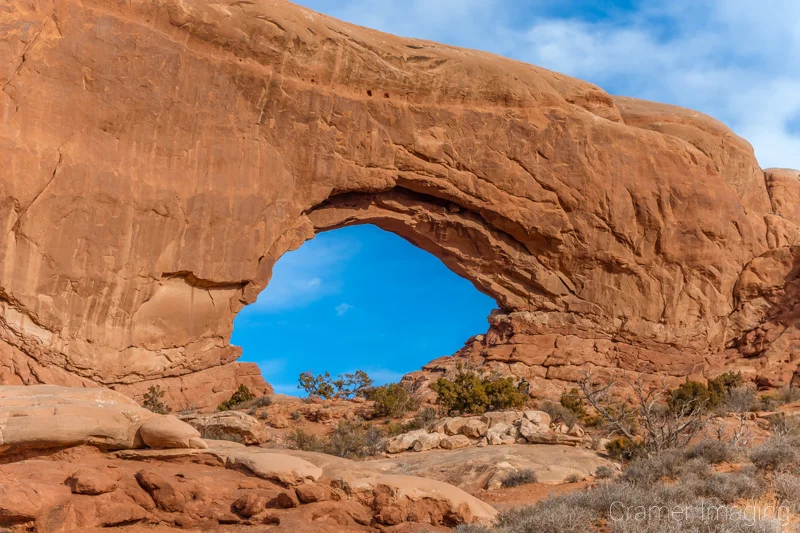
AI images, such as those included here, misrepresent the subject matter they depict. The amount of misrepresentation varies. However, the more egregious examples lead to improper education and unrealistic expectations. They set an impossibly high or unrealistic standard which reality simply cannot live up to. This is why fake AI images are such a problem.
Conclusion
In conclusion, AI image generators can create some very beautiful images. That’s not up for debate or discussion. You can see that fact with your own eyes. Indeed, they can be quite convincing. But, oftentimes, those images don’t reflect reality. This is where the problem comes in.
Things get worse when average people fall for these fakes and then prop up accounts which attempt to pass these AI fakes off as real photography. Then you and many others walk away with inaccurate expectations of reality. So, when you do go to see these amazing landscapes for yourselves, you are confused and disappointed by what you see.
In the end, it’s up to you what you consume, believe, and share. But please don’t support fake AI images. This request is not snobbery on my part. It’s a desire for proper and accurate education about the world around us.

